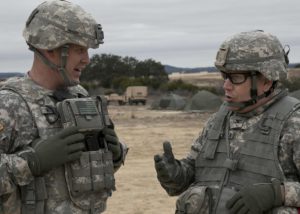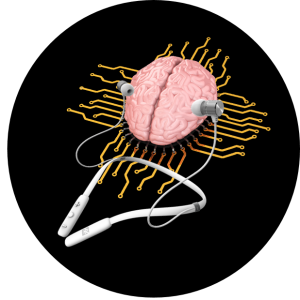[Editor’s Note: As proclaimed Mad Scientist COL Scott Shaw, former Commander, U.S. Army Asymmetric Warfare Group, observed previously on this blog site, “The use of UAS for reconnaissance and targeting will increase. As these systems proliferate, they will lower the ‘entry fee’ into combined arms operations, granting even non-state actors a localized air force and creating a general environment of fear.” Since that conversation, Russia launched its “Special Military Operation,” embroiling Ukraine in an enduring Large Scale Combat Operation where UAS have played an outsized role.
In our on-going quest to understand the Operational Environment, Army Mad Scientist is pleased to publish the first in a series of posts exploring the Twenty-first century’s battlespace, how our pacing threat China is responding to it, and what the U.S. Army can do to prepare our Warfighters to fight and win decisively in it — Read on!]
This decade has seen an increase in the production, employment, and success of Unmanned Aerial Systems (UAS) on the battlefield. These systems were integral components of the Azeri victory in the Second Nagorno-Karabakh War – specifically the Turkish Bayraktar TB2 and Israeli Harop – and are proving vital in the on-going Russo-Ukrainian war. UAS are being used as:
-
-
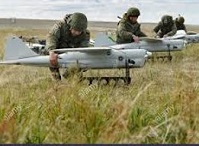 Intelligence, Surveillance, and Reconnaissance (ISR) systems, providing real-time forward observation, fires direction and adjustment, and cueing of strike systems (like the Russian Orlon-10, shown to the right);
Intelligence, Surveillance, and Reconnaissance (ISR) systems, providing real-time forward observation, fires direction and adjustment, and cueing of strike systems (like the Russian Orlon-10, shown to the right);
-
-
-
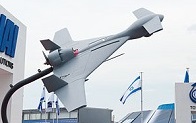 Loitering Munitions (LMs), programmed to surveil an area and strike prioritized target sets (like the Israeli Harop, shown to the right);
Loitering Munitions (LMs), programmed to surveil an area and strike prioritized target sets (like the Israeli Harop, shown to the right);
-
-
-
- Top attack systems, enabling infantry to
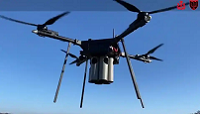 engage dismounted, defiladed troops, armored systems, and other targets with dropped munitions (like the Ukrainian quadcopter configured to drop mortar rounds, shown to the right);
engage dismounted, defiladed troops, armored systems, and other targets with dropped munitions (like the Ukrainian quadcopter configured to drop mortar rounds, shown to the right);
- Top attack systems, enabling infantry to
-
-
-
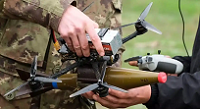 First Person View (FPV) strike systems, enabling hunter-killer teams to destroy targets by delivering munitions via virtual kamikaze strike missions (like the Russian FPV UAS armed with a shaped charge grenade, shown to the right);
First Person View (FPV) strike systems, enabling hunter-killer teams to destroy targets by delivering munitions via virtual kamikaze strike missions (like the Russian FPV UAS armed with a shaped charge grenade, shown to the right);
-
-
-
 One-Way Attack (OWA) systems, providing accurate, long range strikes at a fraction of the cost of a cruise missile (like the Russian Shahed-136 launcher, shown to the right); and
One-Way Attack (OWA) systems, providing accurate, long range strikes at a fraction of the cost of a cruise missile (like the Russian Shahed-136 launcher, shown to the right); and
-
-
-
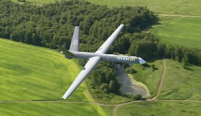 Stand-off strike platforms, remotely piloted aircraft delivering long range precision munitions (like the Russian Orion UAS, shown to the right).
Stand-off strike platforms, remotely piloted aircraft delivering long range precision munitions (like the Russian Orion UAS, shown to the right).
-
Mission sets could include resupply and logistics, maintenance and sustainment, and personal security among others. As additional applications emerge, the U.S. can expect to encounter adversaries that employ UAS to target our military assets across the depth of the battlefield.
UAS’s low acquisition cost and the democratization of the technology required to build them means smaller and less affluent nations and non-state actors will be able to build facsimile air forces to compete with nations with larger defense budgets and robust manned air forces. China, for example, has become a global leader in the export of combat UASs. These drones have been found in conflicts in Asia, Ukraine, Africa, and the Middle East, and at least 17 different countries use combat UASs developed in China.
In addition to Air Domain operations, unmanned systems have carried out strikes in the Land and Sea Domains in Ukraine. Russia has employed its surfeit of obsolescent armored fighting vehicles to execute unmanned demolition missions against fortified Ukrainian positions, with mixed success.  Ukraine has employed Unmanned Surface Vessels (USVs) to carry out strikes against the Kerch Straits Bridge — a vital main supply route linking the Russian mainland with occupied Crimea — and against Russian Black Sea Fleet vessels. Ukraine has also employed USVs in conjunction with UAS to carry out complex strikes against vital Russian naval infrastructure in Sevastopol, Crimea.
Ukraine has employed Unmanned Surface Vessels (USVs) to carry out strikes against the Kerch Straits Bridge — a vital main supply route linking the Russian mainland with occupied Crimea — and against Russian Black Sea Fleet vessels. Ukraine has also employed USVs in conjunction with UAS to carry out complex strikes against vital Russian naval infrastructure in Sevastopol, Crimea.
In its drive to modernize the PLA, China is focused on harnessing the power of Artificial Intelligence with autonomous systems to integrate unmanned air, ground, surface, and underwater craft under multiple configurations, raising 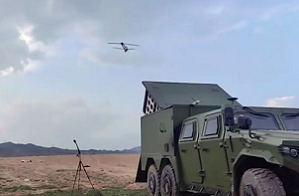 the specter of multi-domain autonomous swarms of systems, capable of attacking from multiple vectors, creating multiple dilemmas to saturate and overwhelm defenses and countermeasures. China is also funding research in manned-unmanned teaming (MUM-T) which could also provide significant battlefield gains as neither a human nor machine acting on its is as effective as both working in tandem.
the specter of multi-domain autonomous swarms of systems, capable of attacking from multiple vectors, creating multiple dilemmas to saturate and overwhelm defenses and countermeasures. China is also funding research in manned-unmanned teaming (MUM-T) which could also provide significant battlefield gains as neither a human nor machine acting on its is as effective as both working in tandem.
The air superiority enjoyed by the U.S. in past conflicts may not exist in tomorrow’s Operational Environment and robust counter-UAS (C-UAS) will be vital in ensuring success on future battlefields. The proliferation of small, man-portable UAS requires our Soldiers to be proficient in counter-UAS tactics. Programs of instruction and rigorous training will prepare our Soldiers for the pervasiveness of UAS that are hard to detect, always observing, and ready to strike. Counter-UAS training should include:
-
-
- Awareness of our adversaries’ ability to surveil our forces in any spectrum, including visible, infrared, and radio frequencies;
-
-
-
- Hardening the force against UAS (to include command posts, logistics nodes, main supply routes, air and sea ports of debarkation, and staging areas); and
-
-
-
- Individual and unit proficiency in C-UAS across all echelons down to the squad level. Soldiers must be as familiar with C-UAS as they are their own weapons — the proliferation of UAS means C-UAS proficiency is a Basic Soldier Skill.
-
If you enjoyed this post, check out the following related TRADOC G-2 and Army Mad Scientist content:
China Landing Zone content on the TRADOC G-2‘s Operational Environment Enterprise public facing page — including the BiteSize China weekly topics, ATP 7-100.3, Chinese Tactics, People’s Liberation Army Ground Forces Quick Reference Guide, and more!
How China Fights and its associated podcast, with seven world-class SMEs on our Pacing Threat
The PLA and UAVs – Automating the Battlefield and Enhancing Training
A Chinese Perspective on Future Urban Unmanned Operations
China: “New Concepts” in Unmanned Combat and Cyber and Electronic Warfare
The PLA: Close Combat in the Information Age and the “Blade of Victory”
Insights from the Robotics and Autonomy Series of Virtual Events, as well as all of the associated webinar content (presenter biographies, slide decks, and notes) and associated videos
Insights from Ukraine on the Operational Environment and the Changing Character of Warfare
Turkey and the TB-2: A Rising Drone Superpower and its associated podcast, with Karen Kaya
The Dawn of the Loitering Munitions Era, by proclaimed Mad Scientist SGM Daniel S. Nasereddine
Top Attack: Lessons Learned from the Second Nagorno-Karabakh War and its associated podcast, as well as Sooner Than We Think: Command Post Survivability and Future Threats and its associated podcast, both with COL John Antal (USA-Ret.)
Insights from the Nagorno-Karabakh Conflict in 2020 (Part I and II)
“Once More unto The Breach Dear Friends”: From English Longbows to Azerbaijani Drones, Army Modernization STILL Means More than Materiel, by Ian Sullivan.
Through Soldiers’ Eyes: The Future of Ground Combat and its associated podcast
The Future of Ground Warfare and its associated podcast, with proclaimed Mad Scientist COL Scott Shaw
Ground Warfare in 2050: How It Might Look, The Intelligent Battlefield of the Future, and its associated podcast with proclaimed Mad Scientist Dr. Alexander Kott
Disclaimer: The views expressed in this blog post do not necessarily reflect those of the U.S. Department of Defense, Department of the Army, Army Futures Command (AFC), or Training and Doctrine Command (TRADOC).

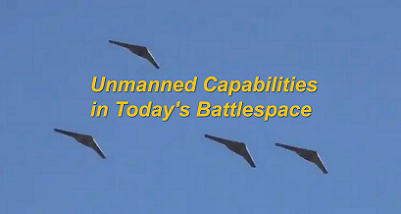

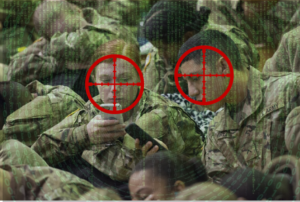 previous revolutions in
previous revolutions in  sustained use of AI today and the future. Gen Z trust is due to their
sustained use of AI today and the future. Gen Z trust is due to their  Generation Z is known for being digital natives who have grown up in a world where technology is integrated into every aspect of their lives. They are more apt to trust AI than previous generations. In March 2021, the University of Queensland in Australia conducted a five-country study on trustworthy AI. The study concluded that Gen Z trust AI 10% more than the Baby Boomer generation (34% vs 24%). More recent surveys also suggest that over 70% of Gen Z believe AI will have a positive impact on the world.
Generation Z is known for being digital natives who have grown up in a world where technology is integrated into every aspect of their lives. They are more apt to trust AI than previous generations. In March 2021, the University of Queensland in Australia conducted a five-country study on trustworthy AI. The study concluded that Gen Z trust AI 10% more than the Baby Boomer generation (34% vs 24%). More recent surveys also suggest that over 70% of Gen Z believe AI will have a positive impact on the world. organizations to make smarter decisions and stronger performance on an organization’s mission-critical priorities, predicts that by 2025, 50% of knowledge workers will use a virtual assistant on a daily basis, up from 2% in 2019.
organizations to make smarter decisions and stronger performance on an organization’s mission-critical priorities, predicts that by 2025, 50% of knowledge workers will use a virtual assistant on a daily basis, up from 2% in 2019. Developing trustworthy AI is important to pave the way for increased integration of AI now and in future generations. Trustworthy AI refers to artificial intelligence systems that can be relied upon to function as intended, while also operating in an ethical and socially responsible manner. It is built on a foundation of autonomy, privacy, transparency, and security.
Developing trustworthy AI is important to pave the way for increased integration of AI now and in future generations. Trustworthy AI refers to artificial intelligence systems that can be relied upon to function as intended, while also operating in an ethical and socially responsible manner. It is built on a foundation of autonomy, privacy, transparency, and security.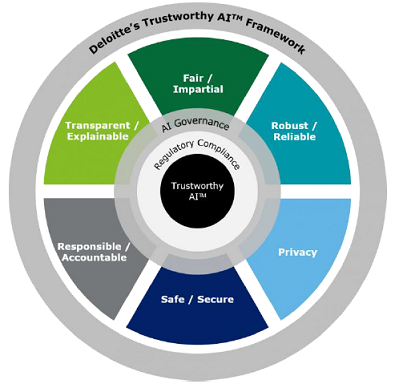
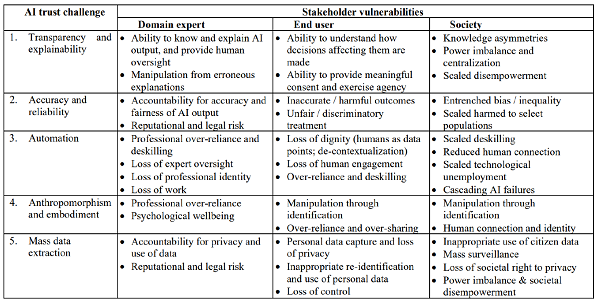

 >>>>ANNOUNCEMENT:
>>>>ANNOUNCEMENT:  Check out
Check out 

 Mr. Ambs participates in the conception, development, and transition of technical solutions for problems affecting operations of the DoD and intelligence communities. He conducts basic and applied research into techniques using measures of brain activation for the discovery of traits, aptitude, knowledge, interest, familiarity, group association and compatibility applied to selection and assessment of individuals for in military, government, academic and commercial environments.
Mr. Ambs participates in the conception, development, and transition of technical solutions for problems affecting operations of the DoD and intelligence communities. He conducts basic and applied research into techniques using measures of brain activation for the discovery of traits, aptitude, knowledge, interest, familiarity, group association and compatibility applied to selection and assessment of individuals for in military, government, academic and commercial environments.
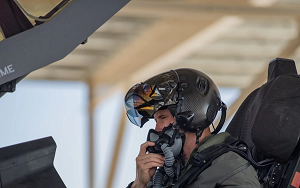 competency or MOS is wasteful.
competency or MOS is wasteful.  Functional Magnetic Resonance Imaging (FMRI) may provide higher detail and fidelity, but it’s not practical for each trainee to sit through an FMRI scan.
Functional Magnetic Resonance Imaging (FMRI) may provide higher detail and fidelity, but it’s not practical for each trainee to sit through an FMRI scan. 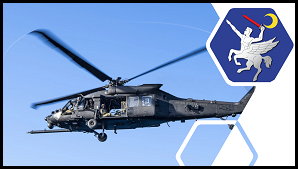 compare their trainee data. Using a group of highly specialized aviators was deliberate in order
compare their trainee data. Using a group of highly specialized aviators was deliberate in order 

 Brain activation response monitoring is dynamic. If successful,
Brain activation response monitoring is dynamic. If successful, 